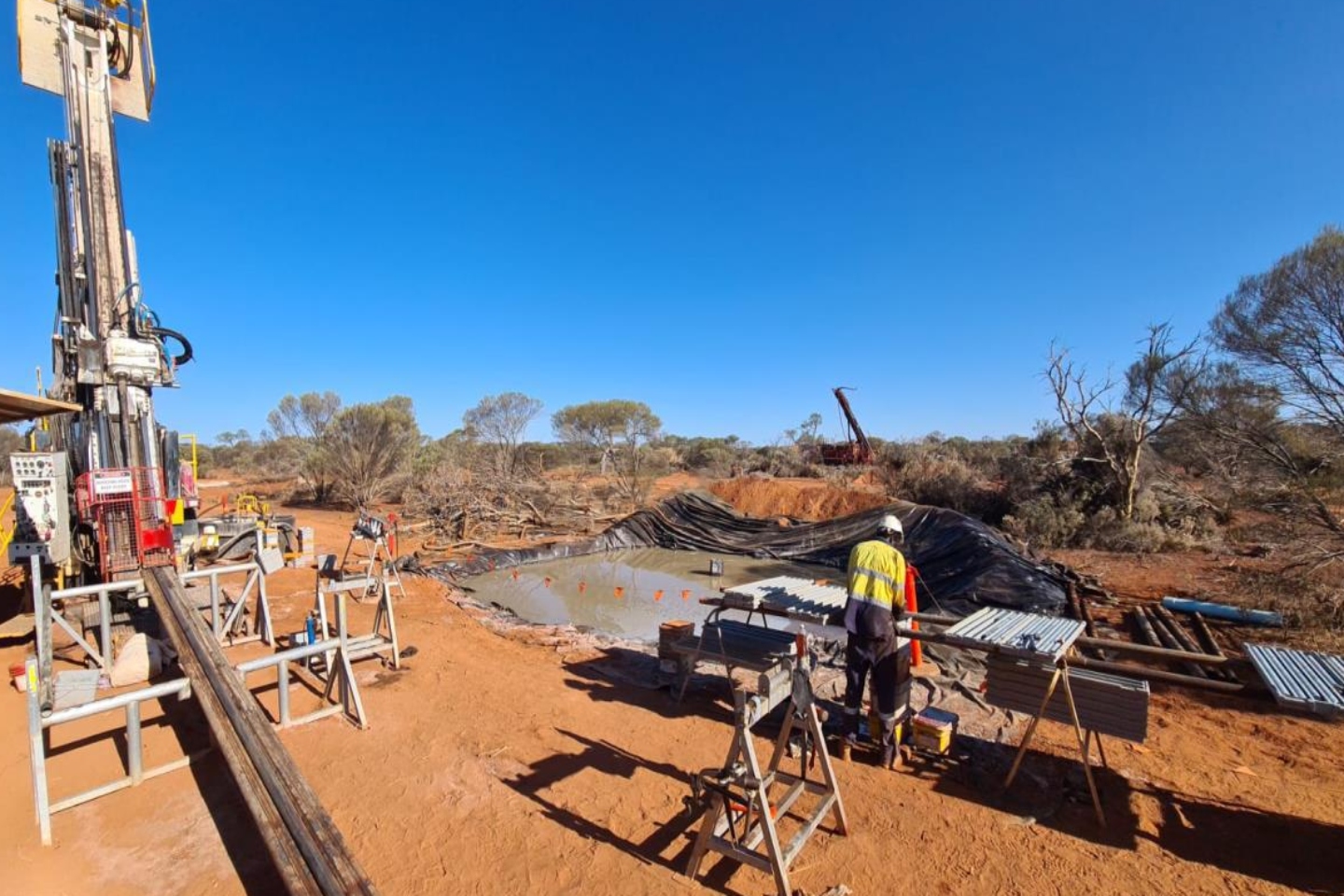A Strickland Metals decision to lock its full focus on its Marwari target at Yandal in Western Australia is paying almost immediate dividends, with new high-grade gold hits including 24m at 7.4g/t from 29m and a second hole yielding 3m at 8.9g/t gold from 71m. The company says the 24m intersection also contained a 5m slice going 28g/t gold.


A Strickland Metals decision to lock its full focus on its Marwari target at Yandal in Western Australia is paying almost immediate dividends, with new high-grade gold hits including 24m at 7.4g/t from 29m and a second hole yielding 3m at 8.9g/t gold from 71m.
The company says the 24m intersection from the deposit within its 100 per cent-owned Horse Well prospect and just 50m north-east of the discovery hole, also contained a 5m slice going 28g/t gold. It comes after Strickland last month suddenly declared it had redirected all its reverse-circulation (RC) and diamond drill rigs to Marwari and sent its ASX share price on a tear.
The high-grade gold numbers come from the first suite of results returned from three diamond-core drillholes and four RC drillholes the company has put into Marwari in its first 19-hole program of deeper evaluation. The campaign has seen the target cored with six diamond holes for a total of 1684m and 13 RC drillholes probing it for a further 2640m.
Strickland Metals chief executive officer Andrew Bray said: “While the Company was hopeful of intersecting the Marwari lode again in these initial diamond holes, what they do confirm is that we are dealing with a large and structurally complex system, as evidenced by the extremely intense alteration, veining and complexity seen in the core, and that the system has also been intersected over 1.1km.“
Bray said the balance of results from the RC work and four diamond holes at Marwari remain outstanding, in addition to the two initial RC holes drilled at Chetak. An RC rig is booked to return in the first week of the New Year for about three weeks before closing operations down for the wet season.
The company’s planning for its “significant” drilling programs for next year is underway, with rigs expected to return to site in mid-March for next year’s primary program. It expects further assays to be returned in the second half of next month.
Strickland says the RC hole containing the 24m gold intercept is located just 50m north-east of the discovery air-core (AC) drill hole that excited ASX punters back in mid-September with an eyebrow-raising run of 31m running 5.6g/t gold from 72m (to end-of-hole and still in mineralisation) including 8m going 17.7g/t gold.
That intercept prompted the company to immediately declare its “all hands on deck” strategy at Marwari to pursue the previously unknown target, responding by adjusting its shallow AC drill program to a closer spacing, moving its RC rig to the project and readying its diamond rig to step in.
The market didn’t miss the flurry of activity as Strickland rolled out its big guns to meet the mystery Marwari gold ship and watched its share price jump from 4.6 cents up to an 11-year high of 18.5c in early December.
The latest round of drilling has not only resulted in additional strong encouragement, but most importantly, has also better defined the likely host shear structure, with classic shearing, sulphides and alteration-related minerals being identified in a strike distance of 240m.
Strickland says the structural understanding gained to date shows that the mineralisation is hosted in a suite of typical repeated sigmoidal style shears, with high-grade dilational lenses aligned along an overall mineralised north-east/south-west trend. That distribution of mineralisation is common in Archaean shear systems and is even evident on a macro-scale when entire greenstone belts are viewed in structural totality.
Accordingly, management says future drilling will be undertaken on a revised orientation, and it plans to heave on the helm to swing its big guns around to bear on a more favourable north-westerly orientation perpendicular to the newly-interpreted axes of the lenses.
The company has also completed drilling at its Great Western target, with seven RC holes completed on 100m spacings and successfully intersecting sulphides, while the first diamond drillholes have also been completed at Rabbit Well.
The latter yielded initial indications of a Mississippi Valley-type (MVT) style of mineralisation. Such lead-zinc deposits are found throughout the world, but the biggest and more intensely researched deposits occur in North America, with ores consisting mainly of sphalerite, galena and generally lesser amounts of iron sulphides.
Management expects results from coming assays to refine its understanding of Marwari mineralisation and possibly also that of the recently-defined Chetak zone, which lies in a similar structural setting – all of which will inform its drilling designs for the first quarter in the new year.
It now remains to be seen if the Strickland ship can catch up with the mystery Marwari vessel.
Is your ASX-listed company doing something interesting? Contact: matt.birney@businessnews.com.au













